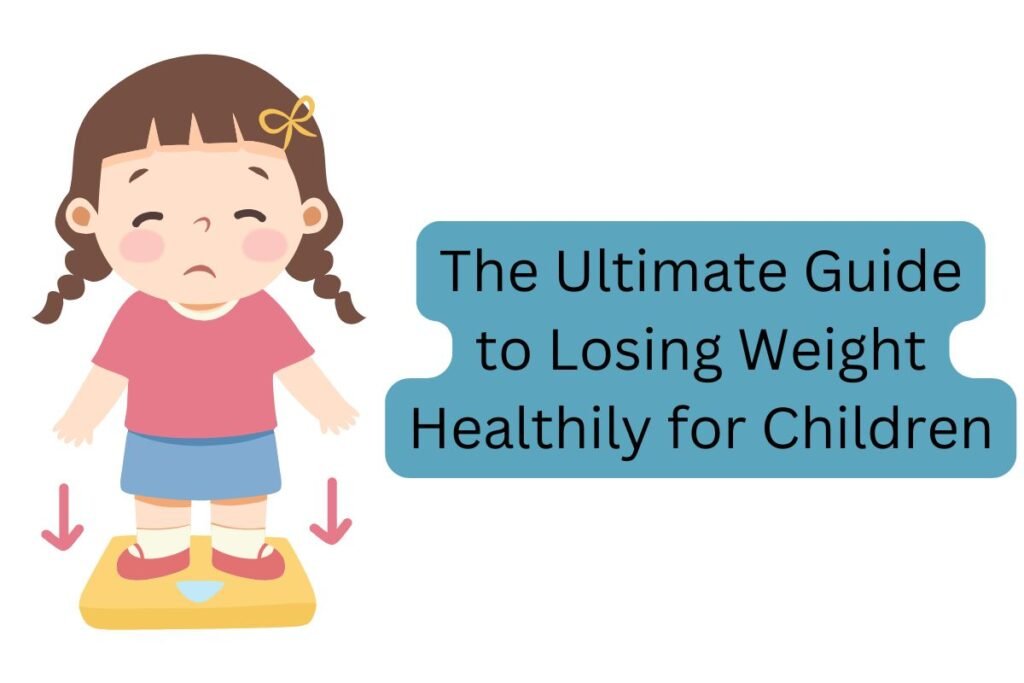The Ultimate Guide to Losing Weight Healthily for Children

The rise in childhood obesity is a concerning global health issue that affects many children and their families. Such children often require a multi-dimensional encompassing proper nutrition, physical activity, emotional management, and family support. This article provides practical steps for children to adopt healthy and sustainable weight loss practices.
Why Focus on Childhood Obesity
What is considered Child Obesity?
Child obesity is defined as a medical condition where a child carries enough body fat that could have negative health implications. To determine such cases, a common practice is to use Body Mass Index (BMI) adjusted for age and sex. For instance, 85-94 percent is considered overweight while 95 and above is considered obese
Problems Associated with Childhood Obesity
•Health Problems: Diabetes, high cholesterol, disordered eating and joint problems that may develop into arthritis.
•Mental Health Issues: Low self-worth and depression stemming from social exclusion.
•Long-term outcomes: Increased risks of being overweight, chronic diseases, and heart diseases in the latter stages of life.
Key Strategies for Healthy Weight Loss
1. Healthy and Balanced Meal Plan
Give Priority to Natural Foods
Natural foods that are rich in nutrients must be a part of the meals, such as the following:
•Fruits and Vegetables: Consume a Diverse variety of fruits and vegetables for a wide range of micro nutrients.
•Whole Grains: Consume whole grain breads, brown rice, and oatmeal.
•Lean Proteins: Such as chicken, fish, eggs, beans, and tofu.
•Healthy Fats: Incorporate avocados, nuts, seeds and olive oil.
Limit or Completely Avoid Processed Foods and Sugary Drinks
•Decrease your consumption of soft drinks and fruit juices which are high in sugar.
•Snacks that have been ultra processed with a lot of salt, sugar and unhealthy fats should not be eaten at all.
Control the Size of Food Portions
Serve appropriate portions of food according to the age of the children, while educating them about eating slowly so they don’t over eat.
Good Hydrating Sources
Advise children to drink enough quantities of water once every few hours.
2. Try to Find Opportunities for Physical Activity
Exercises according to age
•For Younger Kids: Allow children to play which will help them develop active; tag, jump rope, or dance.
•For Older Kids: Start well-defined sporting events such as playing soccer, swimming, or even basketball.
Daily Activity Goals
•Set a fixed target for performing moderate to strenuous activity of not less than 1 hour a day.
•Perform at least 30 minutes of aerobic exercises, muscle strengthening and bone strengthening activities.
Make It Fun
Of course, in the long-run we want your child to be able to look at exercise in a positive manner so choose activities which your child enjoys.
3. Build Healthy Habits as a Family
Meals Should Be Eaten Together
•Family meals promote healthy eating habits.
•It will help to eat while seated at the table, cut out the TV or cellphone at mealtimes.
Schedule Regular Activities
•Have set times for having meals and for snacks.
•Setting up a regimen for sleeping would help avoid sleep deficit which is known to lead to weight gain.
Be a Role Model
The caregivers and parents need to practice what they preach for example the eating healthy and exercising.
4. Address Emotional and Behavioral Considerations
Promote Healthy Body Image
•Try to emphasize health instead of weight.
•Try not to characterize oneself as ‘fat’, nor talk about diets as such.
Emotional Support
•Be a sounding board for your child, don’t rebut them.
•Support them and recognize their little efforts.
Screen Time Should Be Monitored
•Non-educational screen time exposure should be kept to less than two hours per day.
•Take an active approach to play outside the house or other hobbies you like.
Sample Meal Plan for Kids
Breakfast
•A slice of boiled egg on whole-grain toast with avocado spread
•One helping of choice of berries or banana as a side
Snack
•Hummus dip with cucumbers and carrot sticks
Dinner
• A dish of salmon fillet with baked sweet potatoes and a side of steamed broccoli
• One low fat milk
Dessert
• Little serving of assorted salads of fruits
How to Track Progress
Use Non-Scale Indicators
• Keep an eye out for the gradual change in energy, fitness and moods.
• Recognize and reward achievements such as coming up with healthy diets or joining a healthy activity.
Regular Check-Ins with a Pediatrician
Ask your child’s health personnel about the possibility of the weight loss programme.
Common Myths About Childhood Weight Loss
Myth 1: There’s such a thing as two removing all the fats from child’s diets
Healthy fats are crucial for child growth and brain development. Attention should come from things like avocados, nuts and fish.
Myth 2: Avoiding breakfast or lunch is the magical trick to weight loss
If people used to eating three times a day suddenly eats twice a day, they tend to eat excessively too at the previous meal times.
Myth 3: There’s no good snack instead only bad ones
Other than being tasty, fruit and yogurt and other healthy snacks, do provide vitamins and nutrients. Therefore preventing hunger till the next meal time.
Conclusion
It’s self-evident that assisting children to attain their appropriate body mass is a collective responsibility requiring time, adherence and love. Balanced diet, physical activity, and emotions are all important because the entire focus is shifted towards making the children of tomorrow be more healthy cheerful human beings









